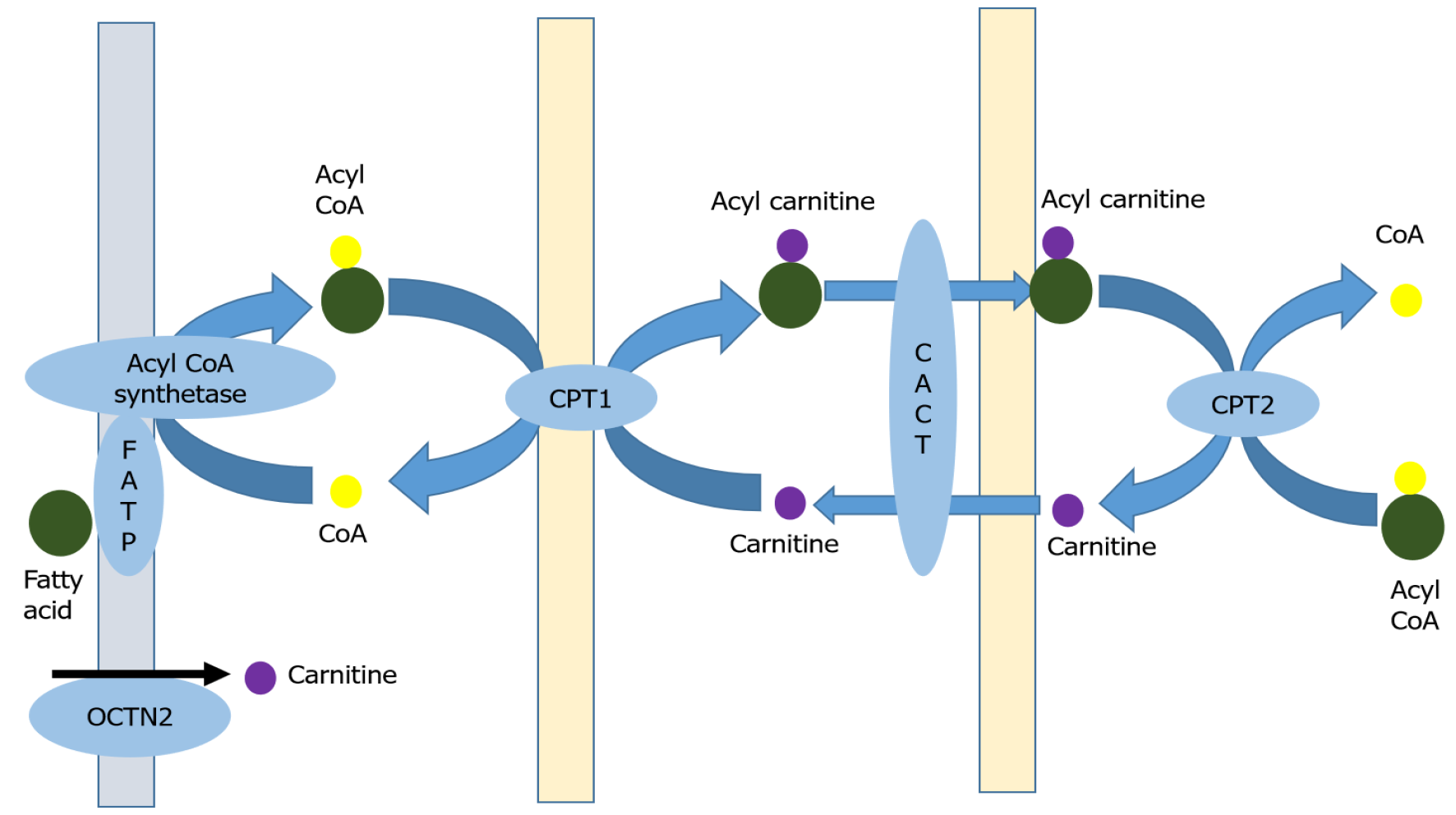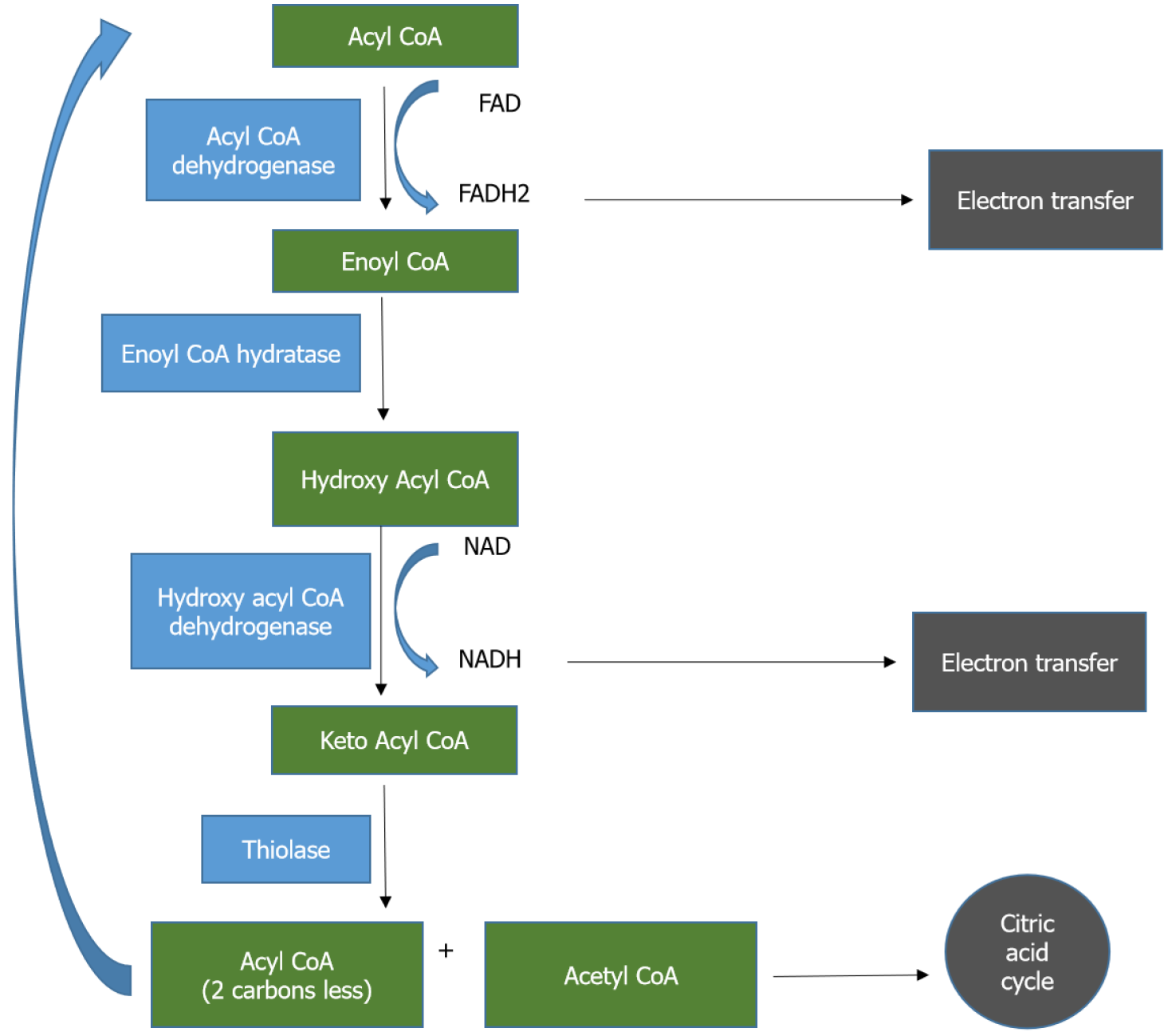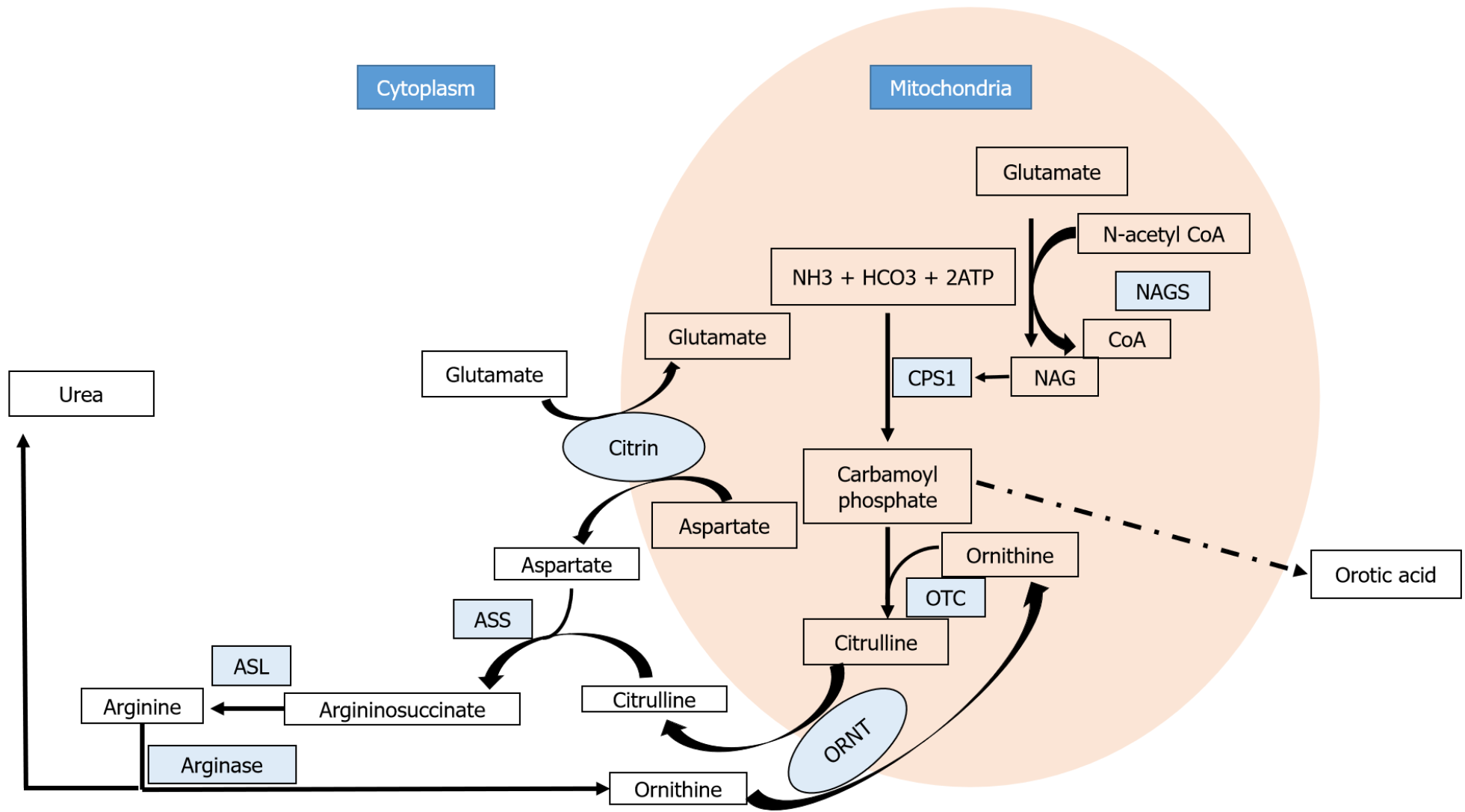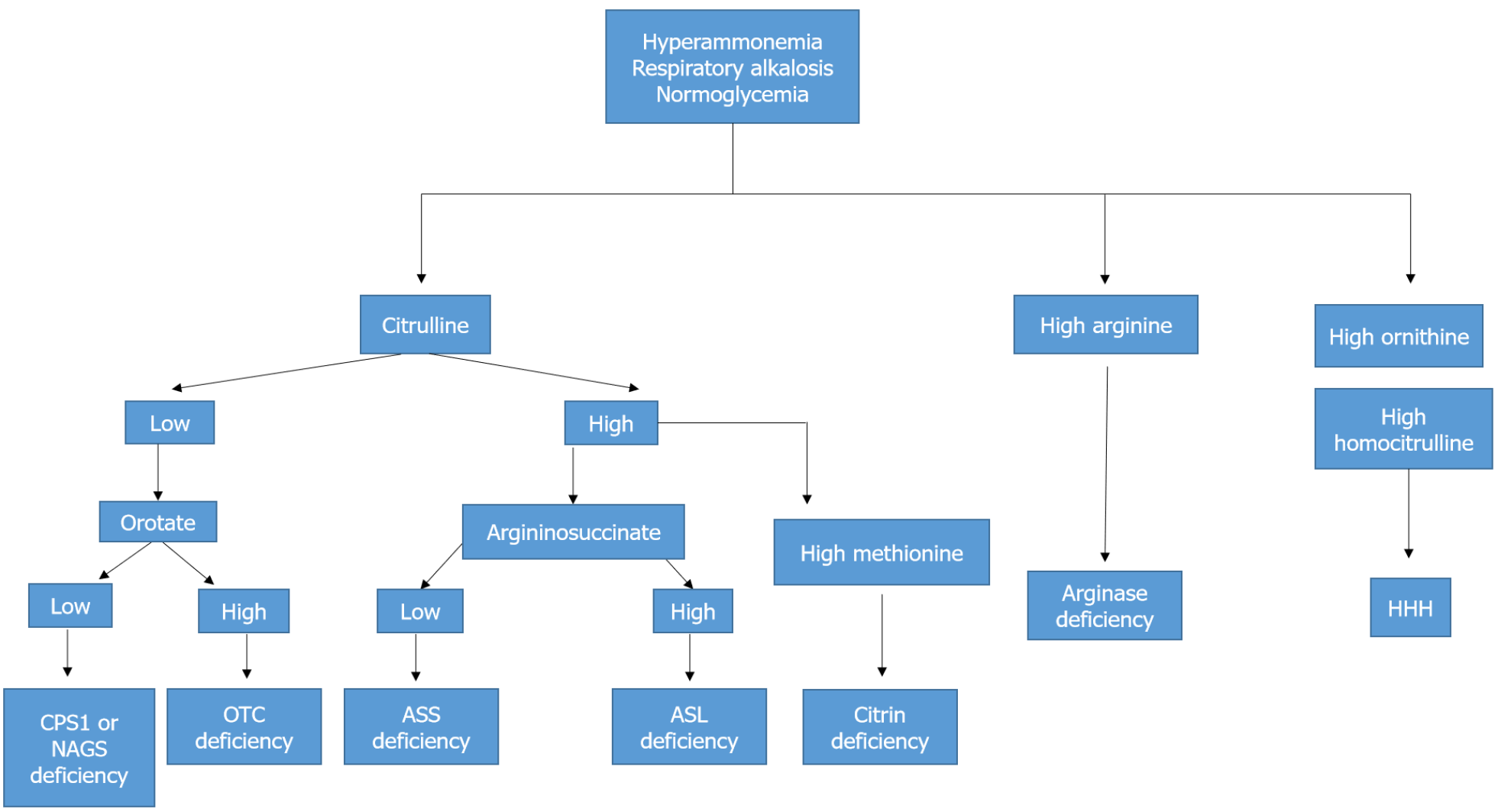Copyright
©The Author(s) 2021.
World J Hepatol. Jan 27, 2022; 14(1): 180-194
Published online Jan 27, 2022. doi: 10.4254/wjh.v14.i1.180
Published online Jan 27, 2022. doi: 10.4254/wjh.v14.i1.180
Figure 1 Carnitine shuttle.
CoA: Co-enzyme A; FATP: Fatty acid transport protein; OCTN2: Organic cation transporter 2; CPT: carnitine palmitoyltransferase; CACT: Carnitine acyl carnitine transporter.
Figure 2 Beta-oxidation of fatty acids.
CoA: Co-enzyme A; NAD: Nicotinamide adenine dinucleotide; NADH2: Nicotinamide adenine dinucleotide (reduced); FAD: Flavin adenine dinucleotide; FADH: Flavin adenine dinucleotide (reduced).
Figure 3 Urea cycle.
NAGS: N-acetyl glutamate synthase; NAG: N-acetyl glutamate; CoA: Co-enzyme A; CPS-1: Carbamoyl phosphate synthetase 1; NH3: Ammonia; HCO3: Bicarbonate; ATP: Adenine triphosphate; OTC: Ornithine transcarbamoylase; ORNT: Ornithine transporter; ASS: Argininosuccinate synthetase; ASL: Argininosuccinate lyase.
Figure 4 Approach to individual urea cycle defects.
NAG: N-acetyl glutamate; CPS-1: Carbamoyl phosphate synthetase 1; OTC: Ornithine transcarbamoylase; ASS: Argininosuccinate synthetase; ASL: Argininosuccinate lyase; HHH: Hyperornithinemia-hyperammonemia-homocitrullinuria syndrome.
- Citation: Ravindranath A, Sarma MS. Mitochondrial hepatopathy: Anticipated difficulties in management of fatty acid oxidation defects and urea cycle defects. World J Hepatol 2022; 14(1): 180-194
- URL: https://www.wjgnet.com/1948-5182/full/v14/i1/180.htm
- DOI: https://dx.doi.org/10.4254/wjh.v14.i1.180
















